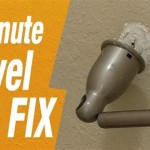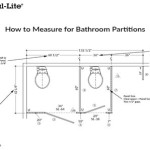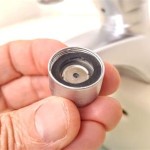What Size Bathroom Mirror For A 30-Inch Vanity?
Selecting the appropriate bathroom mirror size for a 30-inch vanity is a crucial decision that impacts both the functionality and aesthetics of the space. The mirror serves not only as a practical tool for grooming but also as a design element that can enhance the perceived size and light within the bathroom. Choosing the right size requires careful consideration of various factors, including the vanity dimensions, the overall bathroom layout, and the desired visual effect.
A mirror that is too small may appear disproportionate and fail to provide adequate reflection for daily tasks. Conversely, a mirror that is too large might overwhelm the vanity and create an unbalanced look. This article will explore the key considerations and guidelines for determining the optimal mirror size for a 30-inch vanity, covering various mirror types and mounting options to help readers make an informed decision.
Considering the Width: Matching or Extending Beyond the Vanity
The width of the mirror is arguably the most critical dimension to consider when pairing it with a 30-inch vanity. A general guideline is to choose a mirror that is either the same width as the vanity or slightly narrower. A mirror that matches the vanity's width creates a cohesive and balanced appearance. This approach is particularly suitable for smaller bathrooms where maintaining a sense of symmetry is paramount.
Another option is to select a mirror that is slightly less wide than the vanity. Leaving a few inches of exposed wall space on either side of the mirror can create a more modern and minimalist aesthetic. For example, a 24-inch to 28-inch wide mirror would be appropriate for a 30-inch vanity in this scenario. This approach can also be beneficial if you plan to install sconces or other wall-mounted lighting fixtures flanking the mirror.
While matching the width is a safe and standard choice, exceeding the vanity's width is generally not recommended unless there are specific design considerations that warrant it. A mirror that is significantly wider than the vanity can overpower the space, making the vanity appear smaller and less significant. There are, however, exceptions where a wider mirror can be appropriate. For instance, if the bathroom is particularly narrow and the goal is to create the illusion of greater width, a wider mirror could potentially achieve this effect. It is crucial to assess the overall proportions of the bathroom and the visual impact of the mirror before opting for an oversized approach.
Ultimately, the ideal width depends on the desired aesthetic and the specific characteristics of the bathroom. Carefully measuring the vanity and the available wall space will greatly assist in selecting a mirror of appropriate width.
Height Considerations: Proportion and Functionality
The height of the mirror is another important factor influencing its overall appearance and functionality. There is more flexibility in choosing the height compared to the width, but certain guidelines should still be followed to ensure a harmonious design. A common recommendation is to choose a mirror whose height is approximately two-thirds to three-quarters of the vanity's width. For a 30-inch vanity, this translates to a mirror height of around 20 to 22.5 inches.
The height should also be proportionate to the height of the vanity itself. If the vanity is relatively tall, a taller mirror might be necessary to maintain visual balance. Conversely, if the vanity is low-profile, a shorter mirror may be more appropriate. The goal is to create a sense of equilibrium, preventing either the vanity or the mirror from dominating the visual space.
Practical considerations also play a significant role in determining the mirror's height. The mirror should be tall enough to allow individuals of varying heights to see their reflection comfortably. A general rule of thumb is to position the mirror so that the center is approximately at eye level. This ensures that most users can see their face clearly without having to strain or adjust their posture.
Consider how the mirror interacts with other elements in the bathroom, such as the ceiling height, lighting fixtures, and any existing architectural features. In bathrooms with low ceilings, a shorter mirror may be preferable to avoid creating a cramped or claustrophobic feeling. Conversely, in bathrooms with high ceilings, a taller mirror can help fill the vertical space and create a more expansive feel. The presence of lighting fixtures above the mirror can also influence the height selection. Ensure that the mirror does not obstruct the light or create unwanted shadows.
Finally, take into account the overall design style of the bathroom. In contemporary or minimalist bathrooms, a taller, frameless mirror might be preferred for its clean and streamlined appearance. In more traditional bathrooms, a shorter, framed mirror might be more in keeping with the overall aesthetic. The mirror height should complement the other design elements in the bathroom to create a cohesive and visually appealing space.
Types of Mirrors and Mounting Options
The type of mirror and how it is mounted can significantly impact the perceived size and style of the bathroom. Several mirror types are commonly used in bathrooms, each offering unique advantages and aesthetic qualities.
Framed mirrors are a classic choice that adds a touch of elegance and sophistication to the bathroom. The frame can be made from various materials, such as wood, metal, or plastic, and can be customized to match the bathroom's overall color scheme and design style. Framed mirrors are available in a wide range of shapes and sizes, making it easy to find one that complements the 30-inch vanity. The frame can also add visual weight to the mirror, making it a focal point in the bathroom.
Frameless mirrors offer a more contemporary and minimalist look. These mirrors lack a frame, creating a clean and streamlined appearance. Frameless mirrors are particularly well-suited for modern bathrooms and can help create a sense of spaciousness and openness. They are also easier to clean than framed mirrors, as there are no crevices or corners where dirt and grime can accumulate.
Medicine cabinet mirrors provide additional storage space in the bathroom. These mirrors are integrated into a cabinet, allowing you to store toiletries and other personal items behind the mirror. Medicine cabinet mirrors are particularly useful in small bathrooms where space is at a premium. They can help keep the countertop clutter-free and create a more organized and functional space.
Pivot mirrors offer adjustability, allowing you to tilt the mirror to achieve the perfect viewing angle. These mirrors are particularly useful for individuals of different heights or for tasks that require close-up viewing, such as applying makeup or shaving. Pivot mirrors typically have a frame and are mounted on a swivel mechanism that allows them to be easily adjusted.
The mounting method can also influence the mirror's overall appearance and functionality. Mirrors can be mounted directly to the wall using adhesive or hardware, or they can be hung from a decorative chain or bracket. Direct mounting provides a clean and seamless look, while hanging the mirror can add a touch of visual interest and personality to the bathroom. Consider the wall material and the weight of the mirror when selecting a mounting method to ensure that the mirror is securely and safely installed.
When choosing a mirror type and mounting option, consider the overall design style of the bathroom and the desired functionality. A frameless mirror mounted directly to the wall can create a modern and minimalist look, while a framed mirror hung from a decorative chain can add a touch of vintage charm. The choice is ultimately a matter of personal preference and should be guided by the overall aesthetic and functional requirements of the bathroom.
Ultimately, selecting the appropriate bathroom mirror size for a 30-inch vanity involves a careful consideration of various factors, including the vanity dimensions, the overall bathroom layout, the desired aesthetic, and the practical needs of the users. By following the guidelines and considerations outlined in this article, one can make an informed decision that enhances both the functionality and the visual appeal of the bathroom.

Bathroom Mirror Size Calculator

Better Bevel 30 In W X 40 H Small Rectangular Metal Framed Wall Bathroom Vanity Mirror Broe 20082 The Home Depot

Bathroom Mirror Size Calculator

How To Choose The Best Size Mirror Olde Good Things

Ello Allo 30 In W X 36 H Rectangular Aluminum Framed Wall Mount Bathroom Vanity Mirror Black Evm S F B30 The Home Depot

How To Choose A Bathroom Mirror

Tetote 30 In W X 36 H Rectangular Metal Framed Wall Mount Bathroom Vanity Mirror Silver Hd Jskyj7691bs The Home Depot

Eviva Sleek 60 In W X 30 H Frameless Rectangular Bathroom Vanity Mirror Evmr05 60x30 The Home Depot

Fab Glass And Mirror 18 In W X H Frameless Square Beveled Edge Bathroom Vanity Msq18be6mm The Home Depot

Eviva Sax 60 In W X 30 H Framed Rectangular Bathroom Vanity Mirror Brushed Chrome Evmr 60x30 Metalframe The Home Depot
Related Posts







